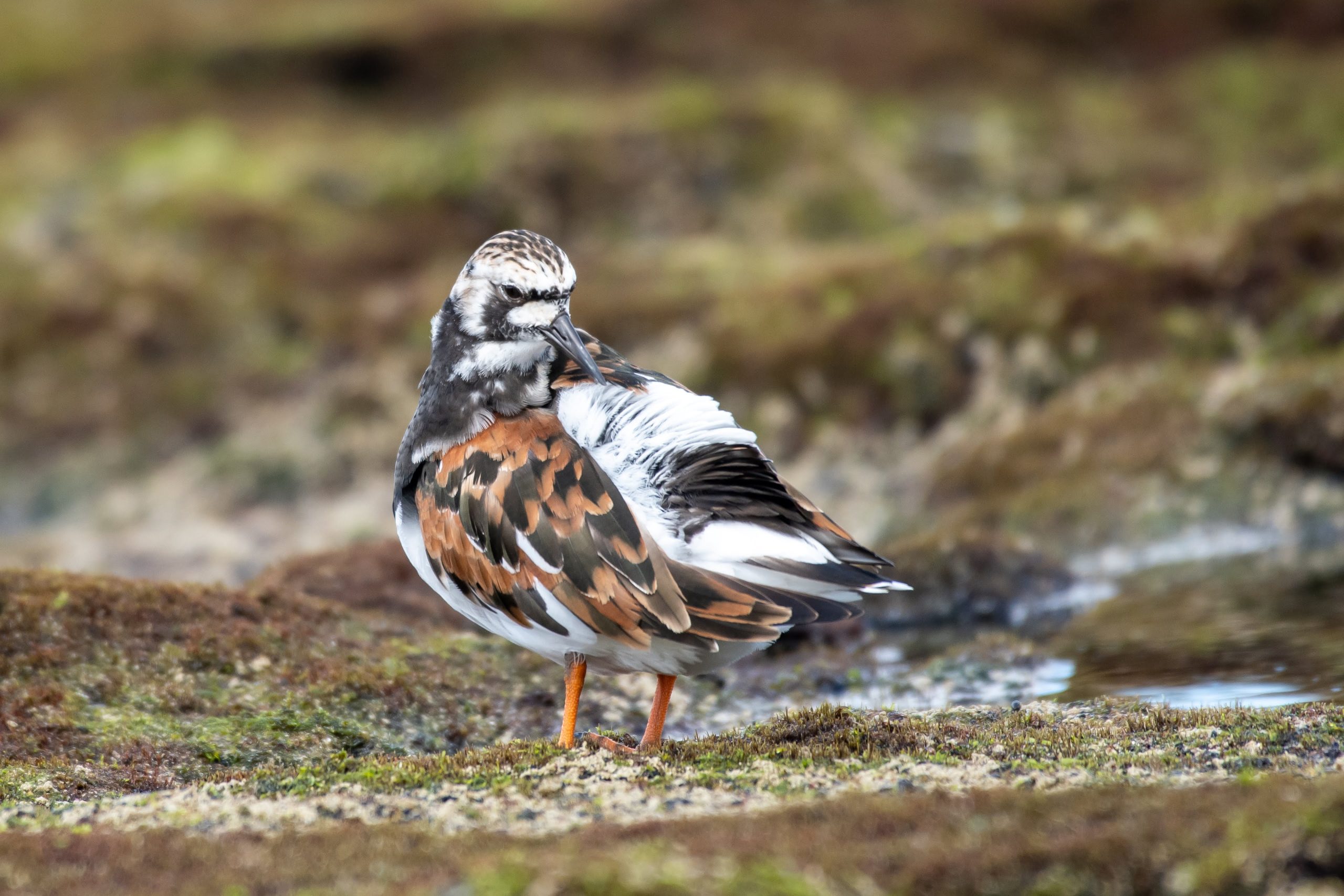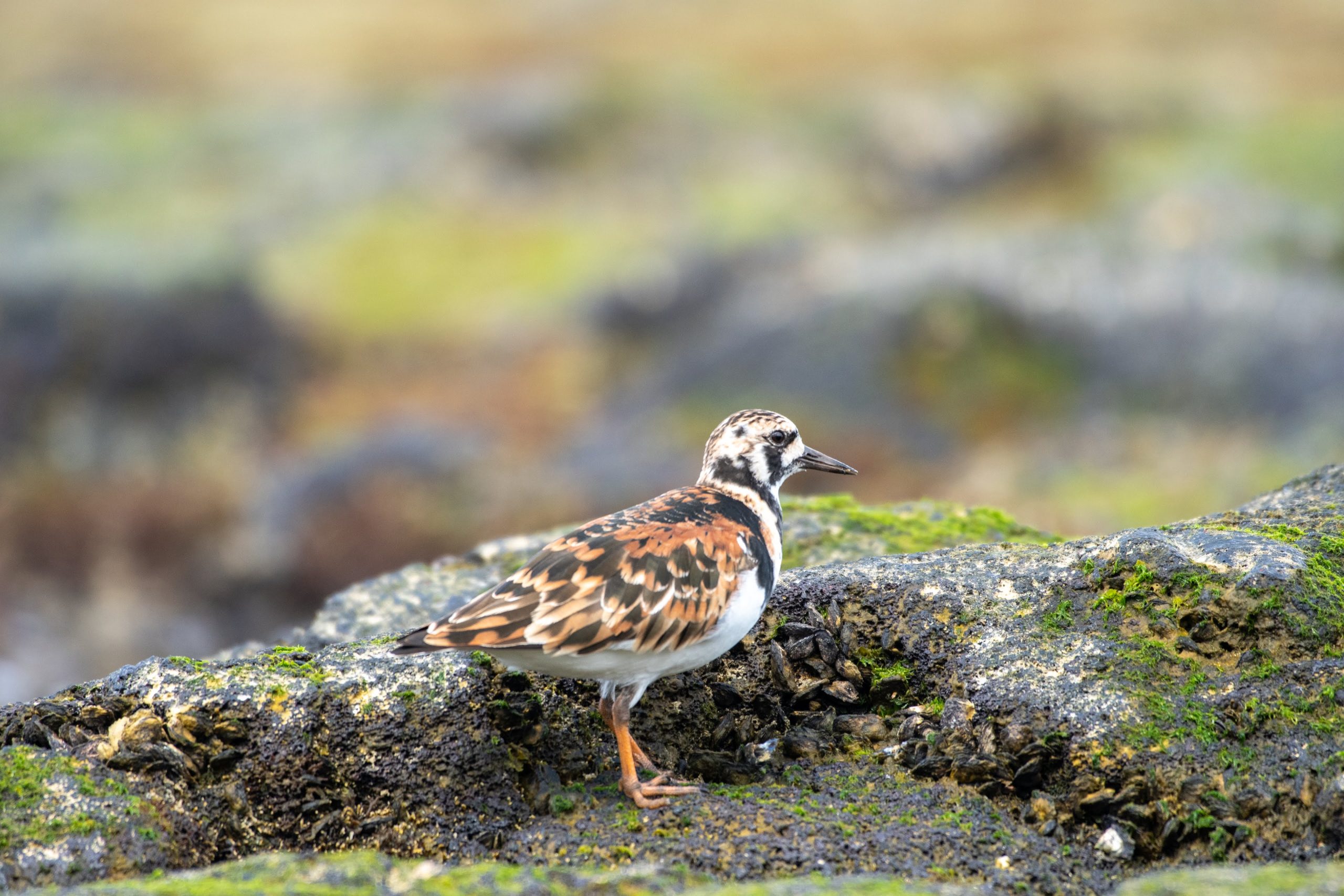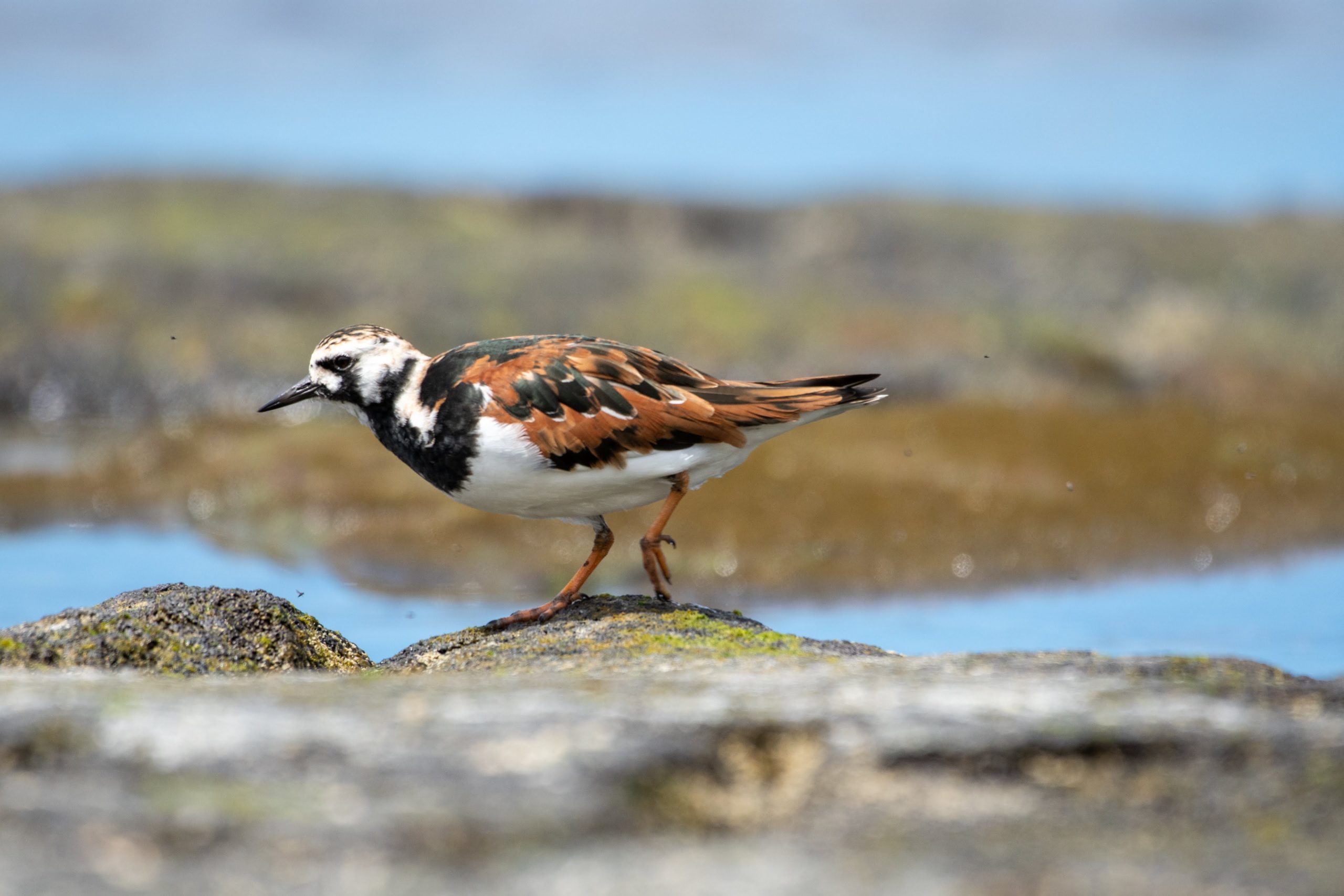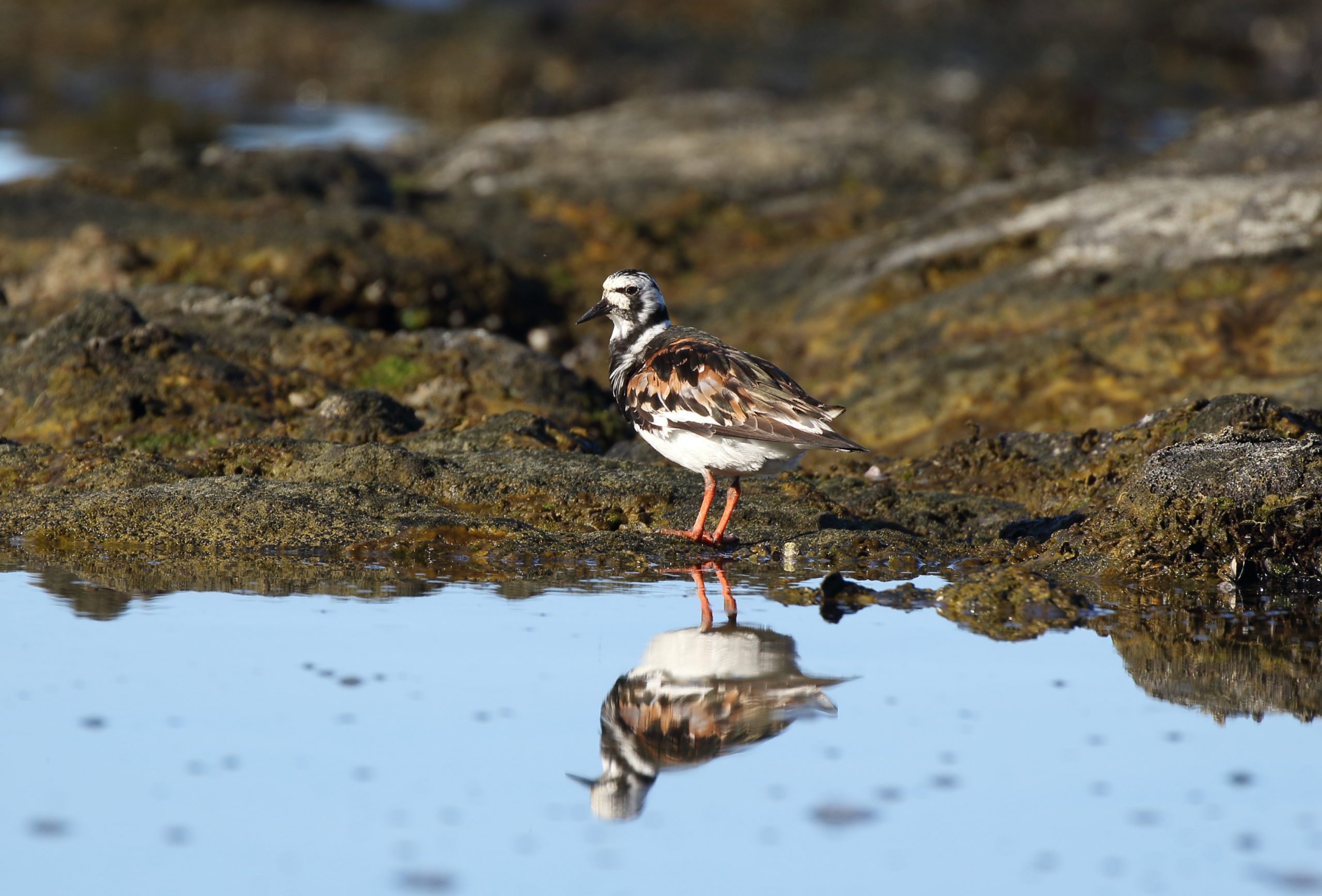ʻAkekeke

Names
- ʻŌlelo Hawaiʻi: ‘Akekeke
- Common: Ruddy Turnstone
- Scientific: Arenaria interpres
Song
Conservation Status
- IUCN Red List Ranking – Near Threatened
Species Information
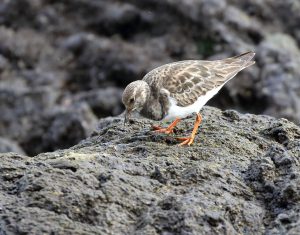
ʻAkekeke or Ruddy Turnstone in winter plumage. PC: Bret Mossman
The ‘akekeke, or ruddy turnstone, is a small, calico-colored shorebird (Family: Scolopacidae) that is one of the most northerly breeding shorebirds. Each year ‘akekeke migrate from tropical coastlines to the Arctic Circle, where they breed in coastal areas and island interiors. ‘Akekeke have short bills, bright reddish-orange legs. They spend their days probing among rocks and pebbles along the shoreline in search of insects, especially flies, spiders, beetles, and grubs. Outside of the breeding season, however, their diet becomes much more diversified, extending to crustaceans, mollusks, worms, small fish, and even carrion, rubbish, and bird eggs.
Distribution
During breeding season, ‘akekeke range from the eastern coast of Greenland to the north-eastern coast of Siberia, with most of the North American population concentrated on the northern coast of Alaska and the Arctic islands north of Canada. In winter, ‘akekeke range across a wide swath of tropical coastal regions from southeastern Asia to southwestern Africa and southern Europe. In Hawai‘i, ‘akekeke are more prevalent on shorelines of the NWHI than in the MHI.
Habitat
In winter, ‘akekeke are almost exclusively coastal, foraging mostly along stony or rocky shorelines with abundant seaweed. However, especially in Hawai‘i and other Pacific Islands, ‘akekeke are also common on sandy shorelines and in mudflats and river deltas. Preferred habitats include ocean beaches along sheltered coastlines or bordering estuaries and other wetlands.
Threats
Across most of their winter range, primary threats to ‘akekeke are human industrial and recreational activity leading to habitat loss and degradation by means of chemical contamination and disturbance. Avian diseases are also a threat.
Plans & Projects
- Kauaʻi Endangered Seabird Recovery Project (KESRP)
- Maui Nui Seabird Recovery Project (MNSRP)
- Lehua Island Ecosystem Restoration Project
- State of Hawaiʻi Biannual Waterbird Surveys
Photos
Additional Resources
For more information and references visit the DLNR State Wildlife Action Plan factsheets. DOFAWʻs species pages and State Wildlife Action Plan fact sheets are provided for general information and are not meant to be a citable, original source of data. If you are a student, researcher, or writer looking for a citable source, please explore the references below or find other original data sources, rather than citing these webpages. The references below were provided by the authors of the State Wildlife Action Plan fact sheets at the time of drafting:
- Nettleship DN. 2000. Ruddy turnstone (Arenaria interpres). In The Birds of North America, No. 537 (Poole A, Gill F, editors). Philadelphia, (PA): The Academy of Natural Sciences; and Washington DC: The American Ornithologists’ Union.

